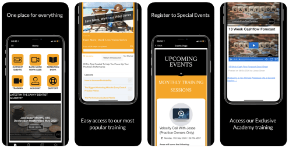We hear a lot about key person risk in terms of reliance on the practice owner.
But it’s also important to make sure that the practice doesn’t depend on any fellow team members disproportionality in the event that you have talent leave.
We love our team and want them to stay with us, but life happens and people leave and you need to be practical.
So, if you want to engineer a practice that can grow and scale without key person risk, there’s a few things you need to do…
1. Map your organisational structure
You should have already created an org chart, but it’s also important to revisit regularly and have a look at where you need to add additional people and roles.
You need to plan for and map your future organisational structure otherwise you’ll find recruitment and growth incredibly clumsy.
Look at who you’ll need to bring on board in the next three, six, or 12 months – and where they sit in relation to your existing team.
2. Assign intellectual property assets to each role
It’s important to stress that we’re talking about the role and not the person. You can’t think in terms of “Mary’s role, Mary’s checklist” because then you’ll find things get built around Mary and she takes all that knowledge with her when she goes.
You want the role to function regardless of who is in the seat.
3. Have metrics and expectations in place
Assign each role a job description with their daily and weekly responsibilities, their KPI’s and parameters for success, a scorecard that allows them to assess their progress in the role and course-correct.
This allows them a greater chance at success because they know what’s expected of them and aren’t stabbing in the dark. It also means that when you have performance management conversations, you have something concrete to refer back to.
You also need an onboarding and training process outlined for each role to ensure staff are trained consistently, and there are no gaps in knowledge.
4. Document knowledge and the way things are done
When a person leaves, taking with them all their corporate knowledge, things become glitchy.
There’s some time taken to train new team members, perhaps that person didn’t document the way certain things are done, there’s gaps in knowledge and skills that take time to fulfill
That’s why it’s so important to plan for the role, not the person. Look at your org chart and identify the roles with the greatest key person risk, and then create some insulation around that.
5. Engage and retain your staff
Recruiting and onboarding is a big investment, so it’s worth dedicating some time and energy to making sure your staff stay in their role. Having a clear path mapped out for them can be a huge retention strategy and make people more inclined to stay.
Obviously, compensation is important, but studies show that a huge part of what keeps people in jobs is the opportunity for growth and career advancement
Look at what sort of things your staff want to learn and achieve in the future – and how can this be fulfilled within your practice?
6. Build understudies for your leads
You also need comprehensive risk mitigation strategies in place for those roles with higher levels of key person risk.
It’s like when you go to the theatre and at the last minute one of the actors can’t perform – they have an understudy in place so it doesn’t affect the paying customers’ experience.
Get good at identifying and training understudies so that if the worst happens (absences, illness, leave, or talent leaving the practice), you have a sub ready to go.
Have the systems and processes in place, the training conducted so that as soon as the situation arises it’s all set to go – always better to be prepared before you really have to.
So, those are some crucial aspects to reducing the key person risk in your practice. If you haven’t got all six aspects in place in your practice, now is the time to start!
P.S Want to scale your dental practice and take your profits to 7 figure success?
Me and my team can work with you directly to get you there! Simply book in your FREE 1:1
strategy session, and we can get started on a game plan for you and your practice.



